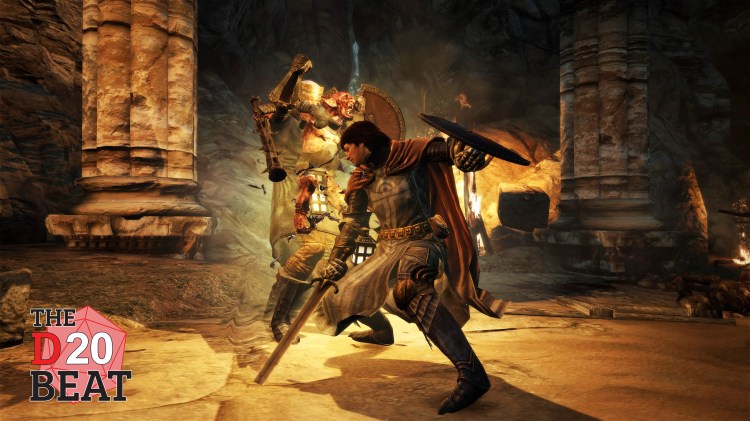I adore Capcom’s Dragon’s Dogma, an open-world role-playing game that first appeared in 2012. I missed out on the Dark Arisen expansion, but thanks to this 2017’s PlayStation 4 remaster, I dived back into the near-6-year-old game.
And about 20 hours into Dragon’s Dogma, I discovered something I hadn’t realized: Dark Arisen, which received criticism for ditching the open world, is a return to the megadungeons of Dungeons & Dragons‘ past, places like Castle Greyhawk and Undermountain. Throw in Atlus’s Etrian Odyssey and Path of Exile’s Delve Challenge League, and this dungeon-loving grognard has been able to spend months diving deep into dark halls full of dangerous traps, powerful monsters, and tempting treasures.
What’s a megadungeon?
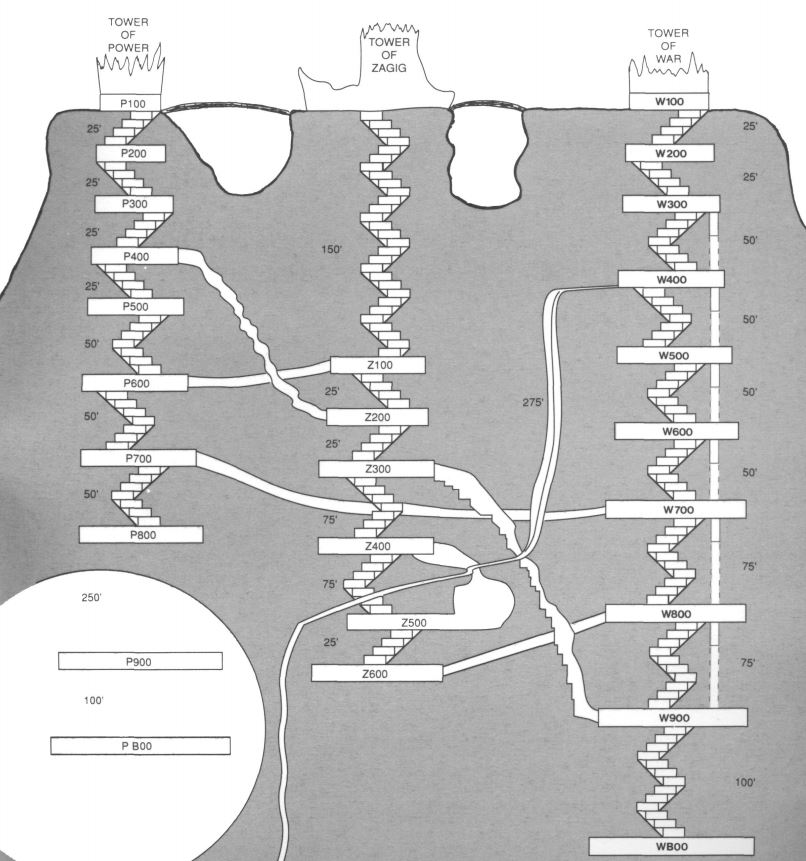
Above: Now, that’s a megadungeon. It’s the halls under the ruins of Castle Greyhawk, from 1990.
D&D co-creator Gary Gygax’s first major home campaign took place beneath the ruins of Castle Greyhawk, which holds the honor of not only being the game’s first dungeon but also its first megadungeon. It’s what its name implies: a deep set of underground halls, with multiple levels and sublevels, full of monsters, puzzles, and traps that get more challenging as you delve deeper into the complex. The threat gets greater, but so too does the reward (in player experience, treasure, and lore).
But a megadungeon may other purposes as well. Castle Greyhawk stands out because it’s more than a megadungeon full of monsters and riches — it’s a trap for the land’s gods. Its creator, the archmage Zagig, used the power of those captured deities to propel himself to demigod status in the Greyhawk campaign setting.
Undermountain is another megadungeon, this one in the Forgotten Realms setting. It might even be deeper than Castle Greyhawk, and its creator is another archmage, Halaster. But he’s also known as the Mad Mage, and as he dug deeper under the Realms’ City of Splendors, Waterdeep, Undermountain didn’t just grow. He connected it to many parts of the Realms and the multiverse with a host of portals. As he descended into madness, he dug deeper, and his halls expanded. His apprentices, some bearing similar broken minds, added levels of their own. And others even founded a city, Skullport, which serves as not only a link to the Underdark but also the seedier side of Waterdeep.
Without Halaster, Undermountain unravels, its portals going crazy and sending monsters into the city above. It creates problems for the rest of the world. So if Castle Greyhawk was a trap for the gods, then one could see Undermountain as a containment system for a mad archmage … and the terrors of the dungeon itself. It’s a trap and a prison, as much as Castle Greyhawk is for the gods.
How do Etrian Odyssey and Dragon’s Dogma: Dark Arisen fit with this?
Bitterblack Isle … a trap
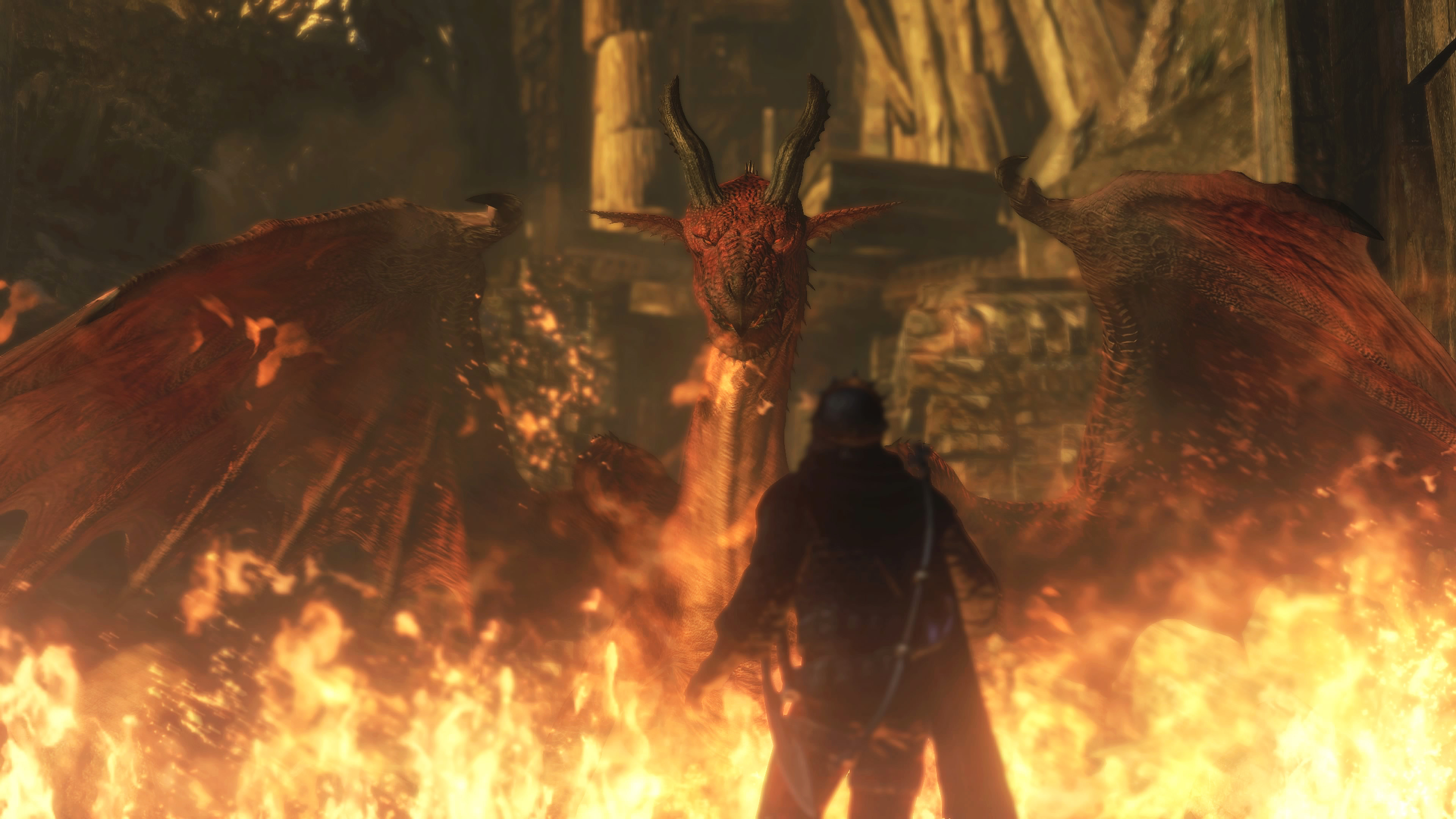
Above: Fire! Fire! Fire!
Dragon’s Dogma has an open world full of adventure and dungeons to explore. Dark Arisen, however, takes place on an island, one where you descend into one deep dungeon. A number of fans recoiled at this, missing the openness of Gransys.
After you clear out the first section of the dungeon, you meet Barroch, a former Arisen. As a trader, he’s a valuable asset at this point. You can sell loot and gear and buy the newest and strongest weapons and armor. And he needs you, using the parts of monsters to further his research.
But he’s more important to the plot as well. He fits into the eternal chain of Arisen (your player character, a warrior reborn)-pawn (these are special NPCs that the Arisen can enlist to help him in his labors and battles)-and dragon (which threatens the world, creates the Arisen by killing a person and taking their heart, and always offering the Arisen a choice when they meet for their final battle — either stay young and let it keep its heart and live, or attack it and risk death if the Arisen doesn’t reclaim its heart.
It turns out he’s not the only former Arisen on this island. The final boss is Daimon, who renounced the choice the Dragon gave him … and found himself cursed into a hideous monster. He seeks to break that chain as he was caught up once in it, losing a love to the eternal cycle. He hates it, and he wants to see it die. So he lures Arisen there to destroy them, turning the dungeon into one great trap.
It’s complicated, some would argue pointlessly so, but turning one island into a dungeon trap feels right in step with what Castle Greyhawk and Undermountain do, too.
The World Tree and its layers
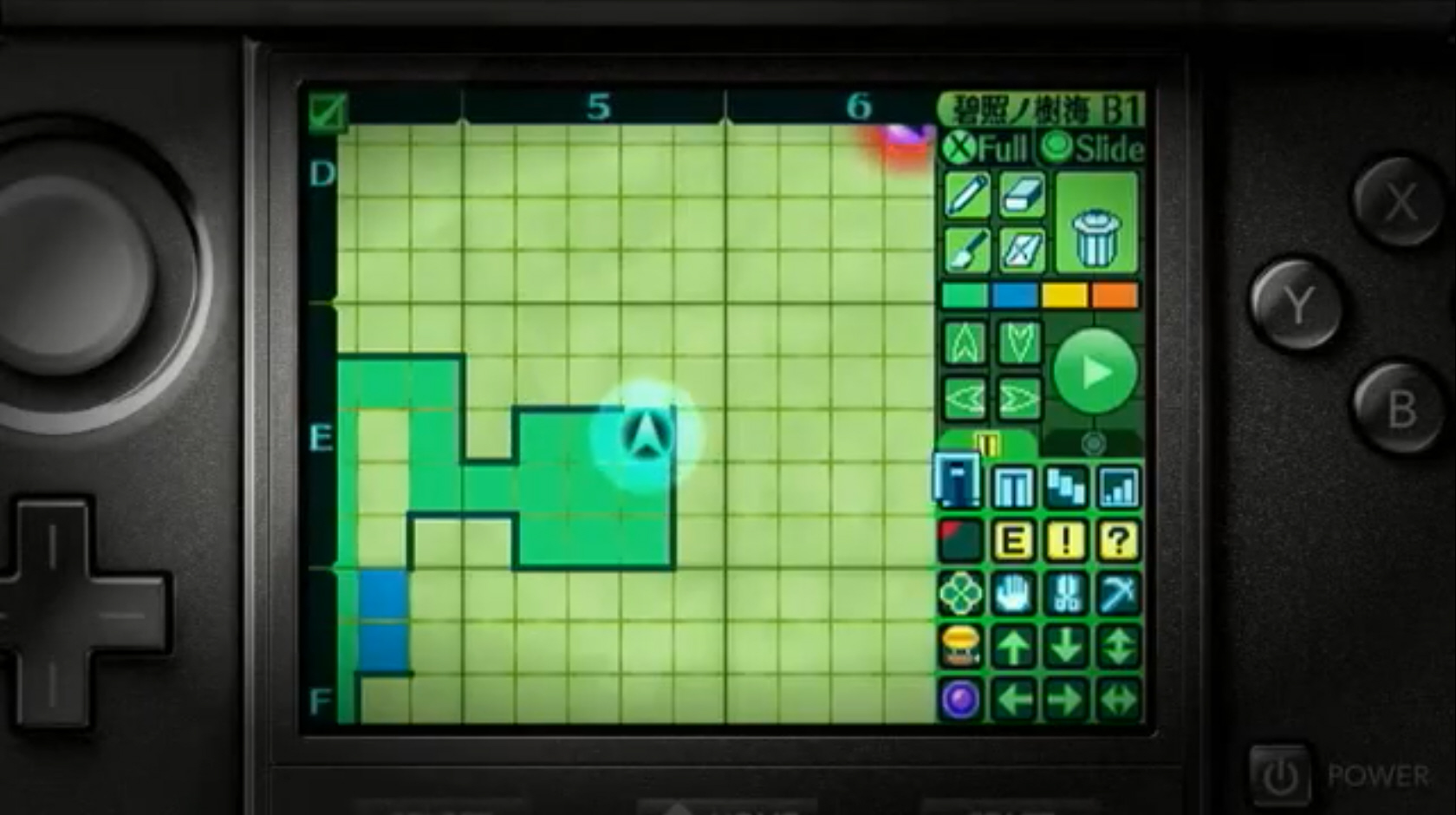
Above: Over 25 years after gamers were using graph paper to make their own maps in The Legend of Zelda, developers started building the graph paper into the game.
Each Etrian Odyssey features one great dungeon, each part split into themed layers. The third and fourth games in Atlus’s franchise, though, started offering other areas to explore, either places you could sail to on the seas or little pockets you could explore from airships.
Etrian Odyssey V does away with that, focusing again on a megadungeon around the world tree, Yggdrasil. Legend claims you can get any wish you desire by reaching the top, so this is one of many reasons why adventurers form parties and brave the dangers of its dungeons.
And that’s the trap — it’s a place that lures adventurers to die. You delve through its six layers and 30 floors, dealing with more dangerous monsters as you go. The rewards are greater, and as you do deeper, you learn more about how the dungeon connects to the world as you go back to town and perform quests and get tidbits of lore. Going into-and-out of the deep halls and learning more about its lore is one of the defining hallmarks of a D&D megadungeon like Undermountain, and I love how Etrian Odyssey feels like one big homage to Halaster’s Halls.
Etrian Odyssey Nexus comes out Feb. 5, and I bet it’s the final game I’ll ever play on my 3DS. I hope Atlus finds some path to bringing the series, which relies on a second screen for mapping, to the Switch.
A path to Delve
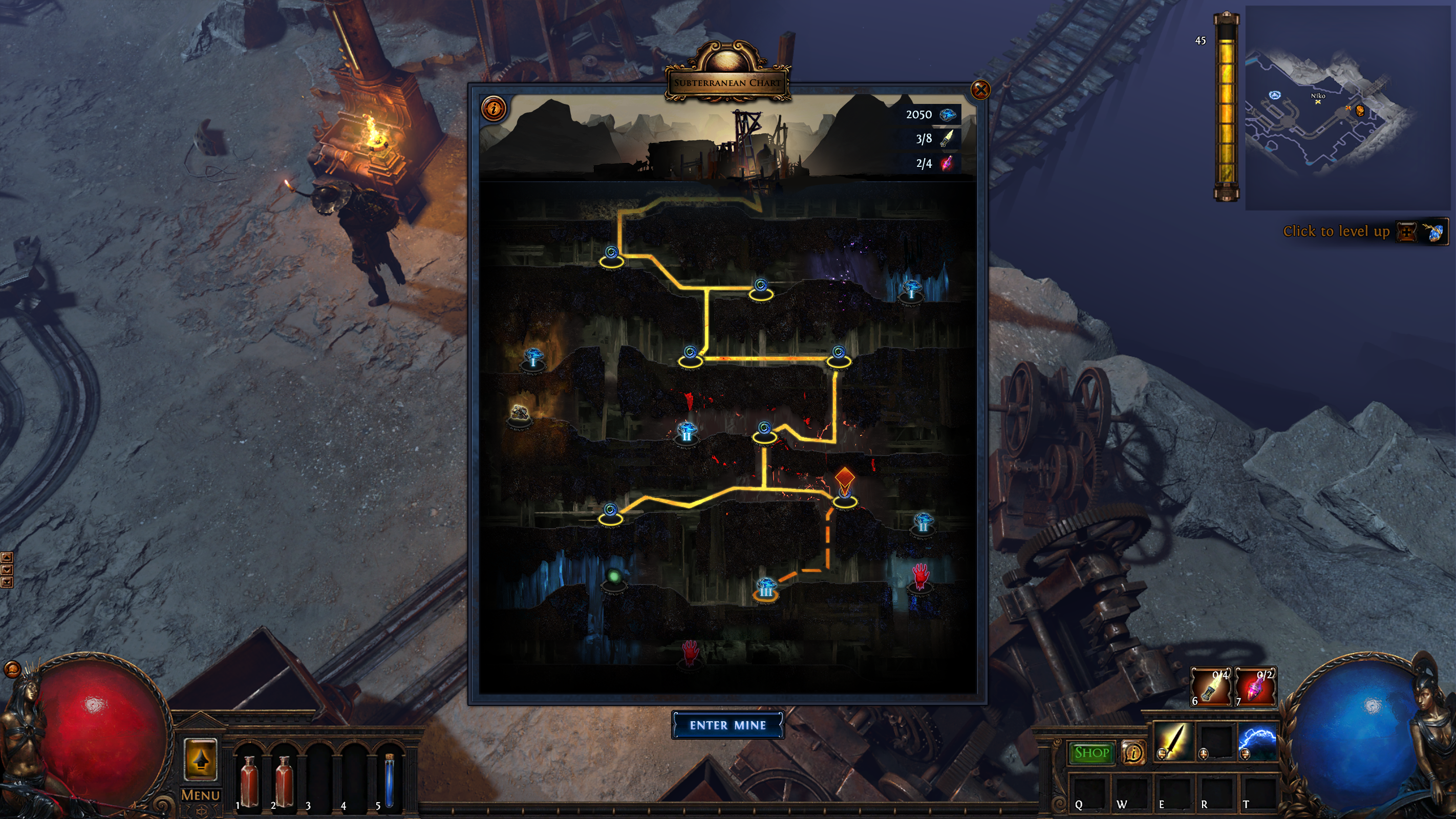
Above: The Delve awaits you!
Path of Exile kinda already feels like a megadungeon in the way one part connects to the other, with hub that connects to them all. Grinding Gear Games though has given the online action-RPG its own infinite dungeon with Delve.
As I wrote last month, the Azurite Mine asks a simple question: Are you afraid of the dark? In the dungeon, darkness deals out damage, and it turns lethal within a short time span. So, this is why Niko the Mad, who’s sending you into the mine to find Voltaxic Sulphite so he can make things with it, forged the Crawler. This little machine reminds me of a farm tractor from the early 1900s, but it’s your lifeline in the mine. It creates a circle of light that holds off the darkness, and it lays a line that links Delves as you travel. Sure, you can stick to this area, fight monsters, and find loot, but the best treasures are outside the protection.
Delve differs from Dragon’s Dogma and Etrian Odyssey in that it’s just about the loot, about the challenge. Grinding Gear’s players have been asking for a mode like this, as they want to know who can go the deepest, last the longest, in as post their scores on the leaderboards. It’s a loot-driven experience, reminding me of SSI’s Dungeon Hack from 1993. It’s all about the challenge, sort of like a roguelike.
Now, I’m going to dive into Delve and see if I can beat my last score … which, sadly, was a death in the first floor of the mine. My archer didn’t last long at all. …
Correction, 8:36 a.m. 9/21: Dragon’s Dogma: Dark Arisen takes place on Bitterblack Isle, not Bittertide. I regret the error.
The D20 Beat is GamesBeat managing editor Jason Wilson’s column on role-playing games. It covers video games, the digital components of traditional tabletop RPGs, and the rise of RPG streaming. Drop me a line if you have any RPG news, insights, or memories to share … or just want to roll a digital d20 with me.
